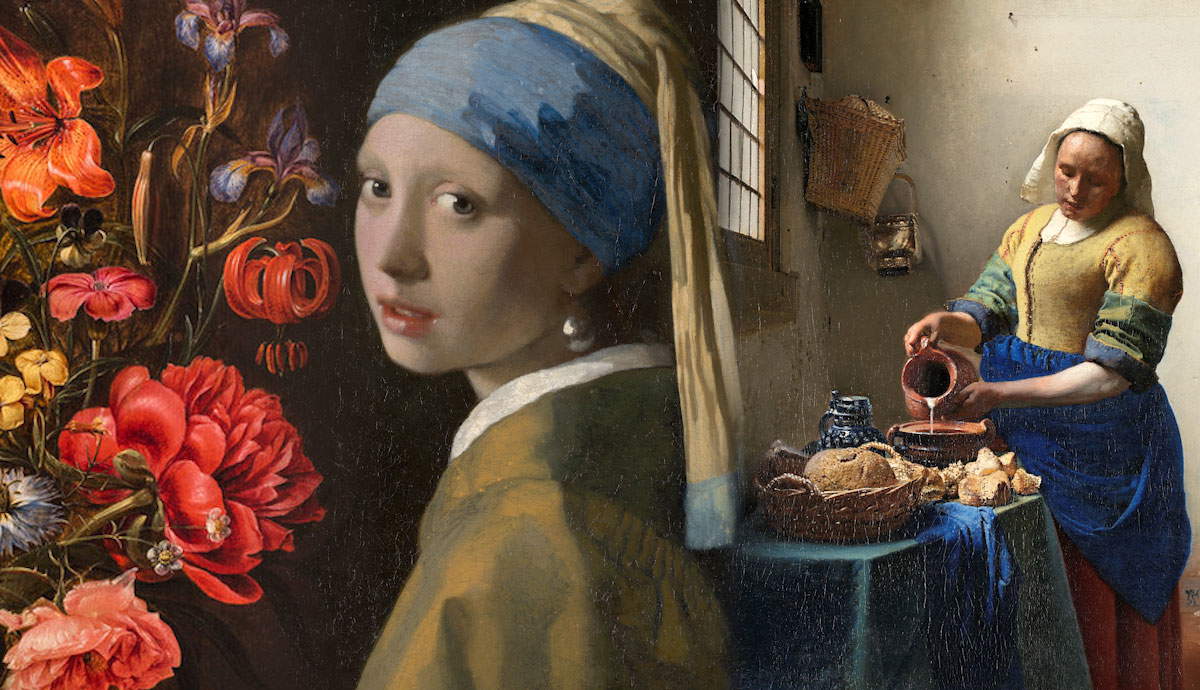
Chiaroscuro is a stylistic art term derived from the Italian word, meaning “light-dark” (chiaro meaning bright and scuro meaning dark). While working with tonal contrast can be traced back to ancient times, the term chiaroscuro emerged during the Italian Renaissance. It is generally used to describe the art of this period and into the Mannerist and Baroque eras, which employed raking directional light and high tonal contrasts to create volume, modelling and atmospheric depth of field. Some of the most prominent artists who explored chiaroscuro include the Renaissance master Leonardo Da Vinci, the renowned Dutch Golden Age painter Rembrandt van Rijn, and the leading Baroque painter Caravaggio. We take a look through just a handful of the paintings that demonstrate just how powerful and emotionally arresting this art technique can be.
1. The Virgin of the Rocks, by Leonardo Da Vinci, 1492-9 and 1506-8

Italian Renaissance painter Leonardo Da Vinci was one of the first to truly master the art of chiaroscuro, which he worked into his brooding, atmospheric paintings along with a soft, hazy, sfumato effect. Da Vinci’s painting The Virgin of the Rocks, (1492-9/1506-8), now in the National Gallery in London, showcases the artist’s ability to capture soft gradations in light and shade, from the deep brown shadows of the rocks and trees to the pale, crisp light that is cast across the faces of the Virgin Mary, Saint John the Baptist, Christ’s cousin and an angel. He achieves these effects by blurring the edges of the figures, so they seem to merge into the surrounding scenery.
2. The Holy Family, by Rafael, 1518

Renaissance master Raphael made multiple paintings depicting the Holy Family, each time experimenting with figure groupings in various settings. Here the key characters seem to emerge from an almost black backdrop, making this painting an early precursor to the ‘spotlight’ tenebrism that followed. Raphael pays particularly close attention to Mary and Christ, accenting them with the crispest, brightest highlights to accentuate their holy luminescence.
3. Salome with the Head of John the Baptist, Caravaggio, 1607-10

The incredible Baroque painter Caravaggio was the master of theatricality, stirring up the most fearsome of scenes through the sheer power of light and shadow. Many think of Caravaggio as the father of tenebrism, a branch of chiaroscuro in which the contrast between light and dark is heightened to create an air of tension and unease. In this painting we see how he paints the background almost entirely black, while the characters are dramatically lit from the left to emphasize their volume in space.
4. Man in Oriental Costume, Rembrandt van Rijn, 1632

Another great pioneer of chiaroscuro was the Dutch Golden Age painter Rembrandt, who mastered a style of painting with rich, deep, earthy shades, accented by gold and yellow, to create believable depth of space and weighty solidity in his sitters. In this grandiose portrait Rembrandt toys with how light cast from the left casts highlights across the man’s body and voluminous clothing, leaving the other side in shadow. He also alternates the darkest corners of the painting on the right with a glowing aura around the man’s right, emphasizing the space behind him and thus creating a greater depth of field.
5. Girl with the Pearl Earring, by Johannes Vermeer, 1665

Johannes Vermeer was another leading figure from the Dutch Golden Age, and his Girl with a Pearl Earring is one of the most celebrated paintings of all time. He sets the young woman against an almost entirely black ground, while emphasizing the effect of raking light as it falls across her face and clothing, giving her an air of enigmatic mystery that has intrigued art experts and enthusiasts for centuries.










